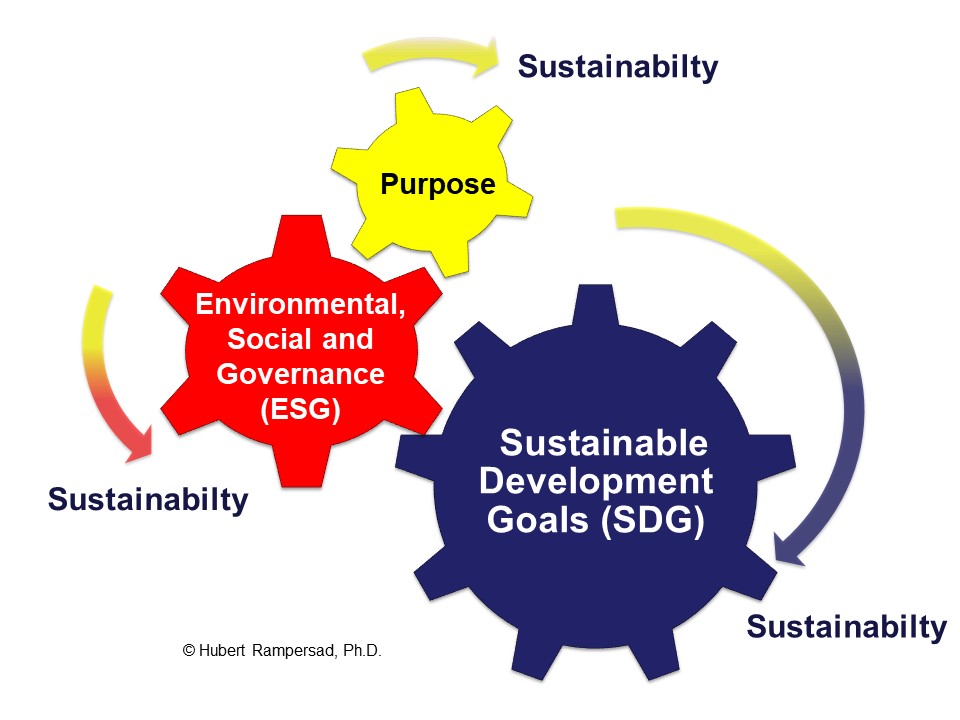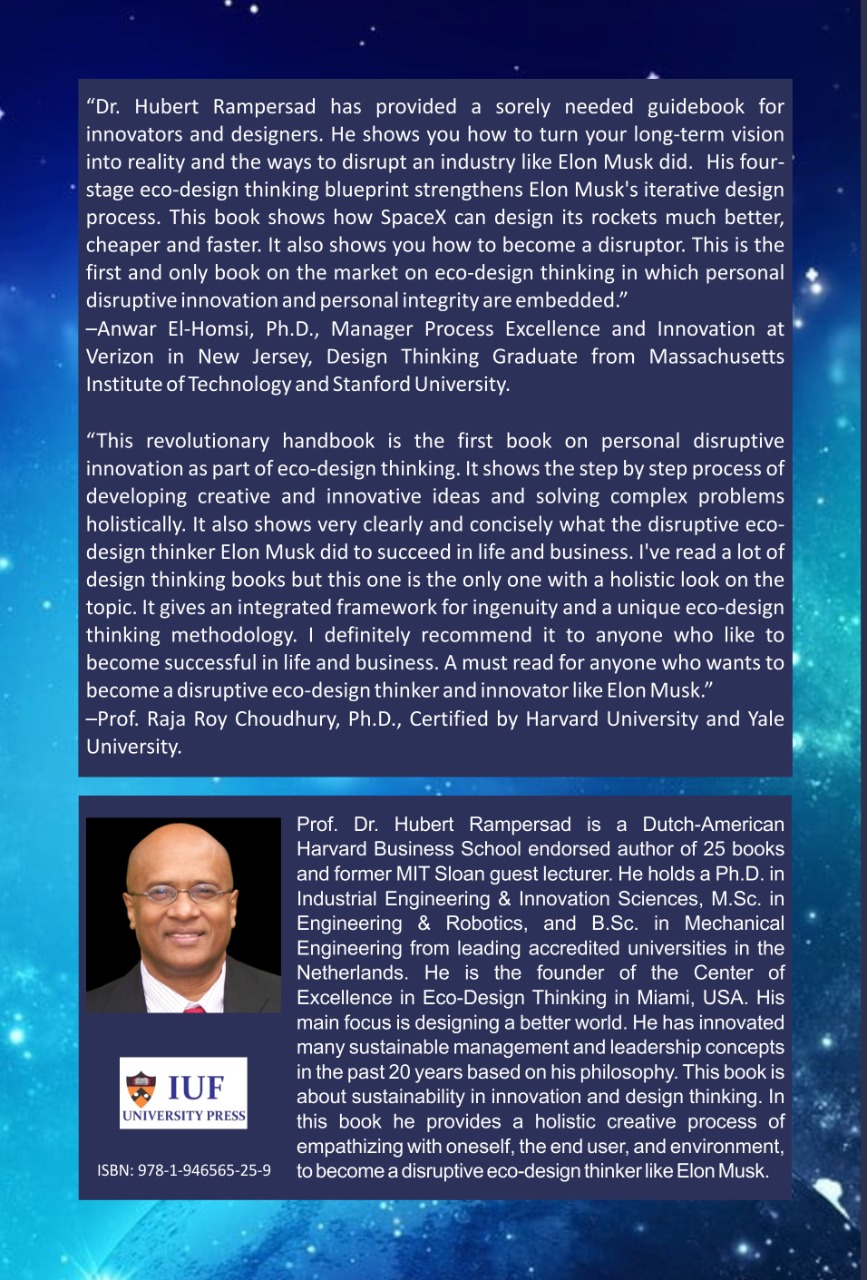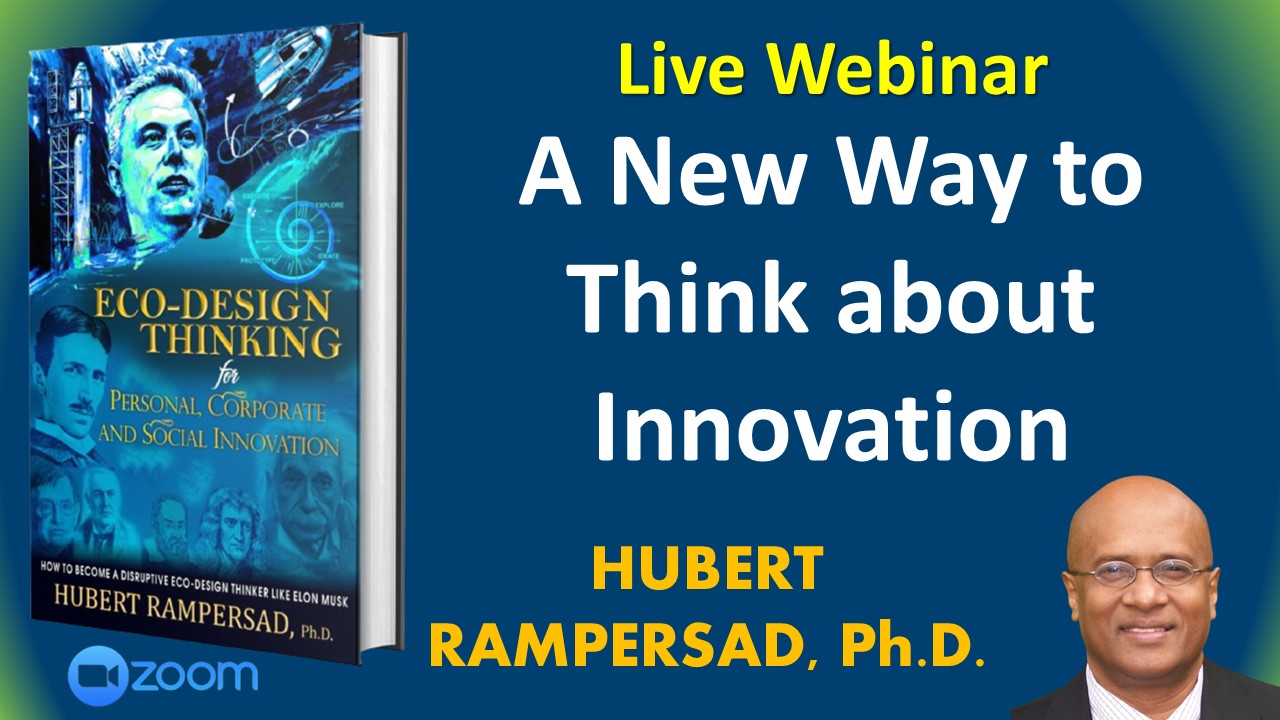Live webinar Prof. Hubert Rampersad: A New Way to Think About Innovation Leadership. This is based on his new book “Eco-Design Thinking for Personal, Corporate, and Social Innovation.” October 10, 2022, 10:00 AM Eastern Time (US and Canada). Zoom link:
https://us06web.zoom.us/j/83305671513?pwd=d0JGc2NUOXF5c1pIZno1RXZXeUwyUT09
Please read the below article for more information about this topic:
Reimagining Leadership

“There is such a need for a complete rebirth of trust in our leaders. Somewhere along the line, they lost their authenticity, humility, and integrity; in doing so, they have lost their empathy and inner alignment“– Hubert Rampersad.
“Empathy is needed to make the world a better place for all animals and humans. Personal integrity is the foundation of empathy, in which there is no room for ego”. — Hubert Rampersad
“We need to address the real roots of climate change, not just the symptoms. People’s personal integrity needs to be tackled, which is awareness about their behavior and actions toward humans, animals, and plants. This is the foundation of empathy. Climate change actions need good people. The world is full of bad people, which is probably why so few engage in climate change”. — Hubert Rampersad
Owing to the lessons learned throughout the COVID-19 crisis, it is high time to design a better world characterized by empathy, personal integrity, non-racialism, nature-friendly, efficient and intelligent working, circularity, a changed role of HR, good governance, and ethical leadership. The significant feature of this better world entails SUSTAINABILITY, that is, sustainability in sustainability, innovation, design, HR, leadership, diversity & inclusion, corporate governance, family businesses, oil & gas, and management & design innovation education, as shown in this Figure.

“Sustainability is a holistic and ethical system in which humans and nature can coexist for a very long period”– Hubert Rampersad.
The first rule of sustainability is alignment with yourself, to continuously perceive what you do sustainability and be aware of the influence of your behavior and actions on human beings, animals, plants, and the environment. This is personal integrity, which is the foundation of empathy and eco-design thinking. In my articles “HOW TO DESIGN A BETTER WORLD“ and “Design For Sustainability,” I discussed in detail how to design this better world sustainably.
This article focuses on sustainable leadership. This is based on my new book “Eco-Design Thinking for Personal, Corporate and Social Innovation: How to Become a Disruptive Eco-Design Thinker Like Elon Musk. “ Read the excerpt from this book about reimagining design and innovation.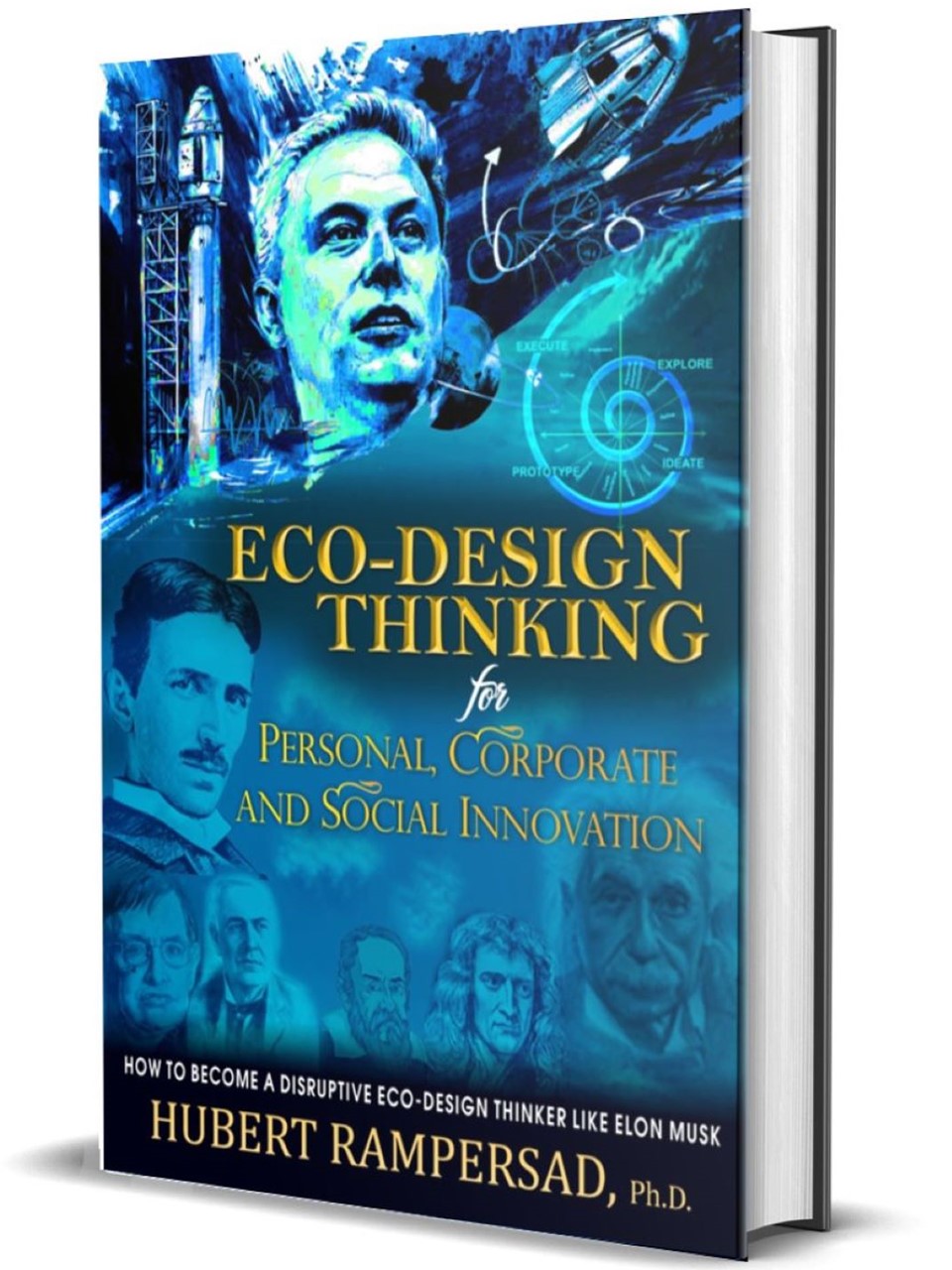
Sustainability in leadership requires a new way of thinking. This new way of thinking is eco-design thinking. The difference between traditional way of thinking and eco-design thinking is shown in this figure. It’s about a fixed mindset versus a growth mindset.

Empathetic Authentic Leadership
A better world needs authentic leaders who lead with personal integrity and empathy. Remember: Personal integrity and empathy are 95% of authentic leadership. In this article, I introduce a methodology for sustainably developing personal integrity & empathy.
“In hiring people, you look for three qualities: integrity, intelligence, and energy. The other two will kill you if you do not have the first. If you hire somebody without personal integrity, you want them to be dumb and lazy.”–Warren Buffett.
Honesty and personal integrity are critical components in today’s business. They are leaders’ and professionals’ most fundamental character traits and crucial ingredients in creating empathy.

The new average needs personal integrity, empathy, and sustainable good governance. You need genuine empathy, empathy, and respect for animals. I refer to this article: “Jane Goodall says ‘disrespect for animals’ caused a pandemic.“. Read also what Sir David Attenborough said: “Humans Are A Plague On Earth’. Human impact is having a catastrophic effect on our planet and on climate change. Read also. “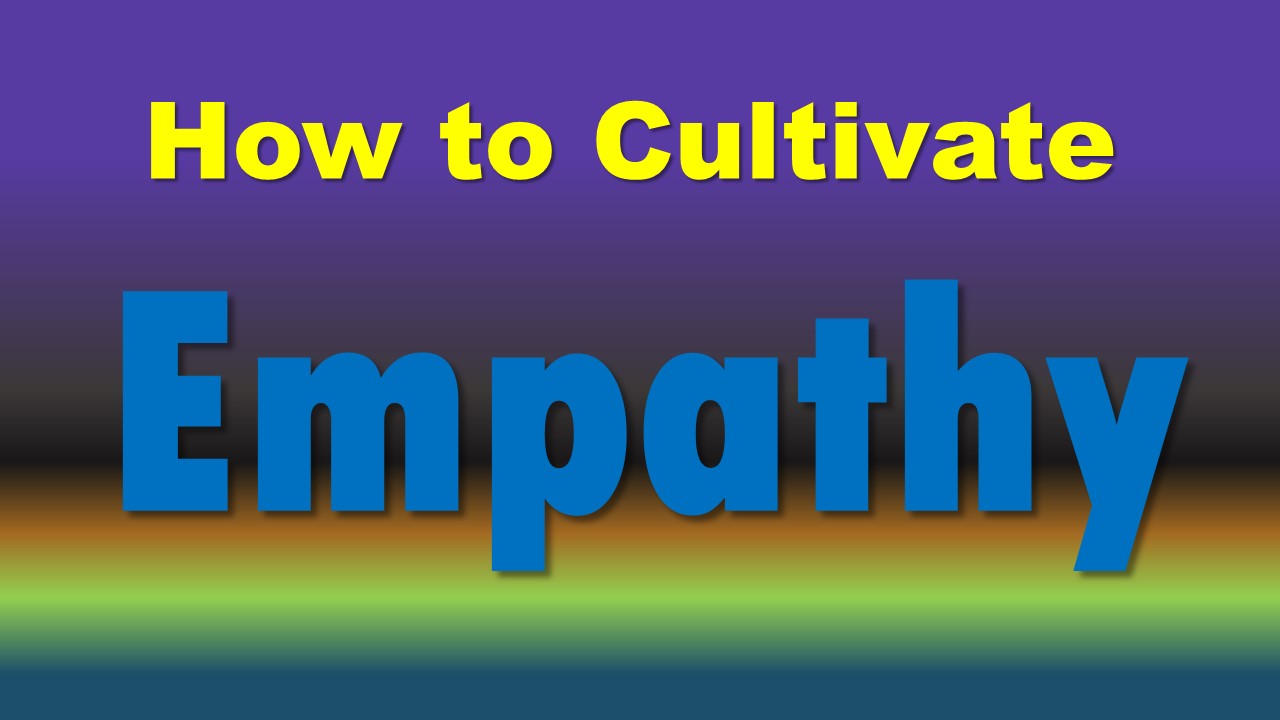 How to Cultivate Empathy”.
How to Cultivate Empathy”.
How to Develop Personal Integrity
Looking at oneself honestly and openly is the most potent and essential skill in becoming a successful, authentic leader. Customers and employees will trust you if they experience consistent, trustworthy behaviors. It is, therefore, necessary to ensure that who you are, what you say you are, and what others experience from you are always the same. When you commit to do something for your customer, he/she will take you at your word. When you betray this trust, it is tough to get it back. You must be integer and honest and always live up to your promise. With a reputation of integrity, you will develop a long-term relationship with your customers and others. In this way, you will become a trusted resource. If you offer a trusting relationship, your employees will stay loyal and not waste time looking for someone else. As a result, your relationship builds brand equity, which entails cumulative levels of credibility, trust, and value.
Being Genuine, Authentic, Integer, and Honest are Essential in the New Normal
In this section, I will introduce a methodology for developing personal integrity sustainably, as described in my new book “Eco-Design Thinking for Personal, Corporate and Social Innovation: How to Become a Disruptive Eco-Design Thinker Like Elon Musk.“. Remember, having a great personal brand identity can make you a big winner or loser if your brand does not reflect your true character and does not deliver on your related promise. Employees and customers want to work with people they trust. They do not want to work with somebody who is selling fairy tales. Not delivering on your promise is a secure way to ruin your reputation and credibility. Credibility is the most important thing to a leader or professional. You, therefore, need to demonstrate integrity and a positive reputation at all times. If you want to be a successful leader or professional, you have to earn your customer’s trust, which means being genuine, authentic, integer, and honest.
To become a successful leader, you must commit yourself to live and act according to your brand promise and ensure you can deliver. Employees and customers relate to you as your word and how you fulfill that. If you say you will do something, you should do that with no excuses. Each time you make or break a promise, you affect your brand image. You should also keep promises that you make to yourself. If you fail to commit to yourself, you will not have inner peace and will not develop personal credibility and charisma. You have to live your values consistently on a day-to-day basis and show transparency and accountability. A personal leadership brand built on lies will crash (truth always comes out), and a brand built on the person’s true character is sustainable and robust. To borrow Dwight Eisenhower’s words, a person who values privileges above their principles soon loses both.
Building Trust by Being Your True Authentic Self
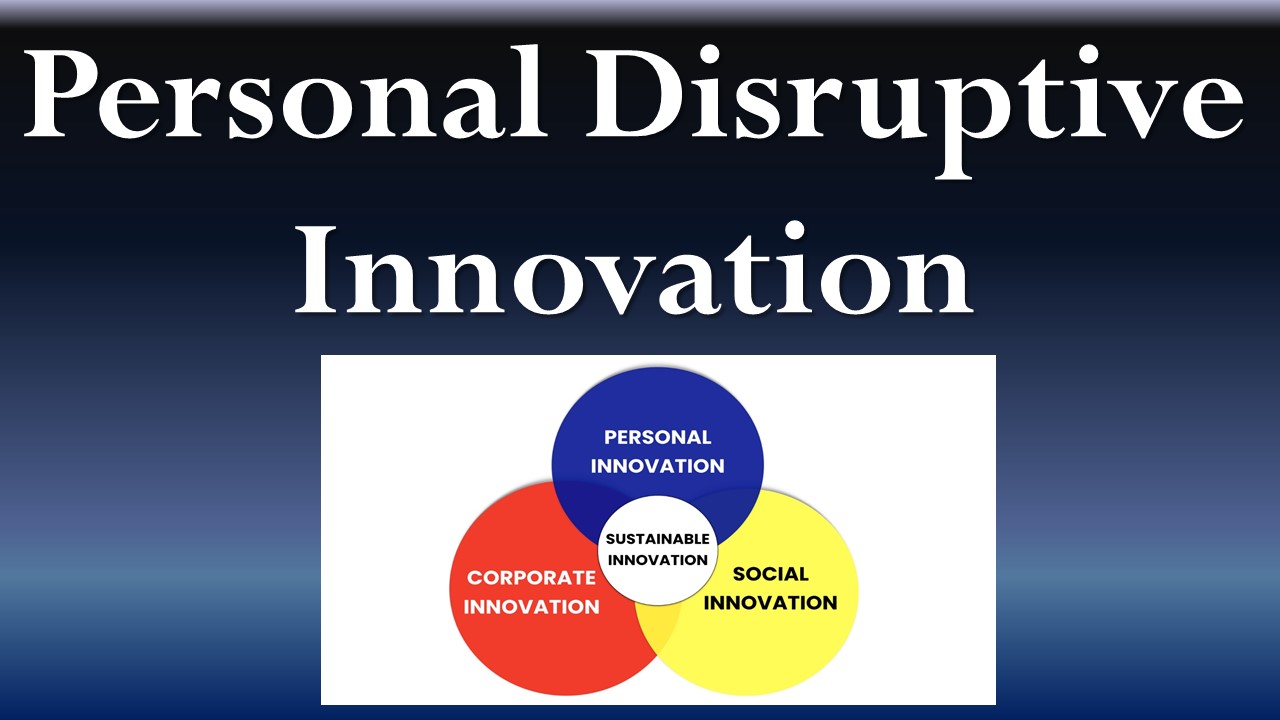 Your personal leadership brand should reflect your true self. It must adhere to a moral and behavioral code set down by your personal ambition, as described in detail in my “Personal Disruptive Innovation Model.” This means that who you really are, what you care about, and your passions should come out in your leadership brand, and you should act and behave accordingly (you should be yourself) to build trust. I refer to my article “4 Steps to Become Resilient and Cultivate a Growth Mindset“:
Your personal leadership brand should reflect your true self. It must adhere to a moral and behavioral code set down by your personal ambition, as described in detail in my “Personal Disruptive Innovation Model.” This means that who you really are, what you care about, and your passions should come out in your leadership brand, and you should act and behave accordingly (you should be yourself) to build trust. I refer to my article “4 Steps to Become Resilient and Cultivate a Growth Mindset“:
Trust will be built faster when others believe you are honest and when they witness you being true to your beliefs and aligned with who you really are. You will build trust when your values connect to your attitudes and actions and when you are true to yourself.
Building trust starts with being genuine and authentic to yourself. This involves finding the proper balance between your personal ambition and behavior and actions to create a stable basis for trust; it is about aligning with yourself. This inner alignment is essential to lasting personal growth, reduction of ego, and reinforcement of empathy, integrity, honesty, trustworthiness, credibility, and personal charisma. People with this perspective on life create a stable basis for being empathic, credible, truthful, and trustworthy. They:
- Practice what they preach.
- Keep their word; their actions match their words and personal ambition.
- Keep their brand promises; there is consistency between their personal brand and behavior.
- Do what they said they would do despite the obstacles.
Inner Authority
When you achieve this inner authority, you will become empathetic, and you will also have a positive effect on the commitment, motivation, and dedication of those around you. As a result, promoting yourself based on your personal brand will be much easier, more sustainable, and prosperous. In this way, your unique image (what others identify with you) will be in harmony with your personal leadership brand (how others perceive you); your appearance will reflect your brand. This alignment of your ambition and behavior is needed because if you do not deliver according to your brand promise, it will negatively affect your reputation and damage your personal brand. Therefore, it is advisable to under-promise and over-deliver always.
The most intimate relationship you have is with yourself. You will strengthen this relationship and build personal integrity by aligning your ambition with your behavior and actions– with who and what you are. This aligning process is about  the interaction between your dream, aspirations, intentions, purpose, and values—in other words, your personal ambition— and how others interpret you (your personal behavior). So, developing personal integrity is a spiritual process. I refer to my article “How Mindful Meditation Boosts Creativity, Innovation, and Imagination.“.
the interaction between your dream, aspirations, intentions, purpose, and values—in other words, your personal ambition— and how others interpret you (your personal behavior). So, developing personal integrity is a spiritual process. I refer to my article “How Mindful Meditation Boosts Creativity, Innovation, and Imagination.“.
Alignment with Yourself
“When you examine the lives of the most influential people who have ever walked among us, you discover one thread that winds through them all. They have been aligned first with their spiritual nature and only then with their physical selves.”– Albert Einstein
Your values (part of your personal ambition) are the principles by which you live your life and affect how you think, feel, act, and behave. When your actions, behavior, and thoughts reflect your values, personal integrity results. This affects your relationship with others and your empathic behavior positively.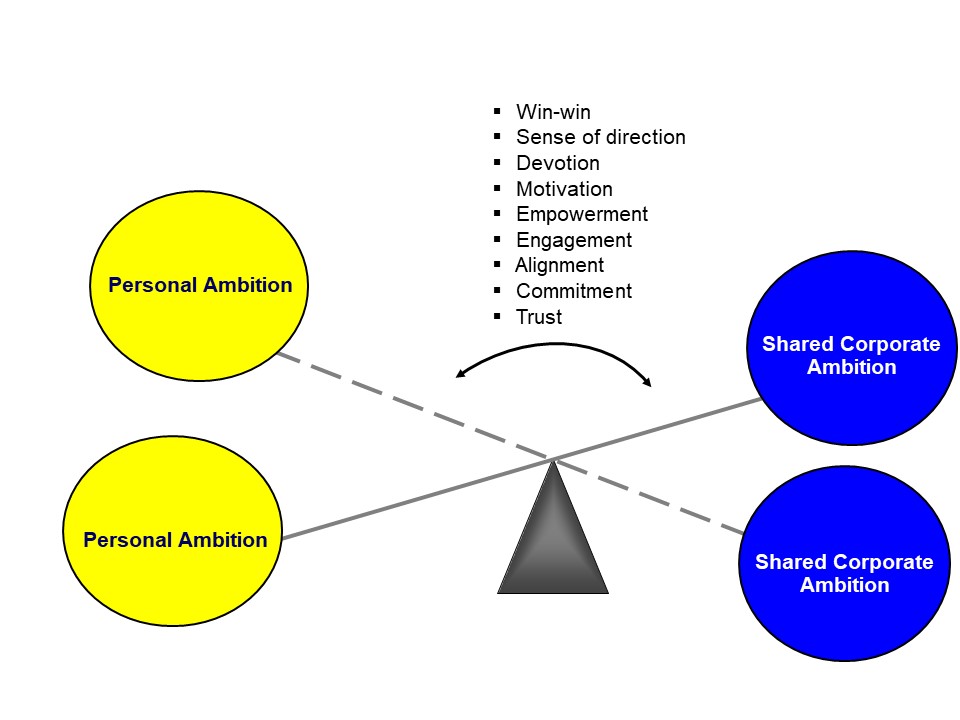
There is a potential difference between how you see yourself (who you want to be) and how others judge you (how you are perceived by others). While we judge ourselves by our invisible behavioral patterns, others judge us by our visible behavioral patterns—what we do and say and how we act. These judgments are the perceptions of you in the heads of others. The more distinctive your actions, the better your brand becomes for them. To become the person envisioned in your personal ambition, you must also know how others see you and what they think of you. When you know this, your self-knowledge increases, and you will be able to improve the effectiveness of your actions. As a result, your brand and your empathetic and innovation skills will be stronger. Therefore, I recommend the establishment of a balance or fit between your personal ambition (which envisions a higher level of consciousness) and your personal behavior (which refers to your present behavior and actions), as shown in this Figure.
Balance Between Personal Ambition and Personal Behavior/Actions
Your personal ambition is shaped by your mindset. Behind these opinions, your motives and inner needs are hidden, as expressed through your behavior. To achieve sustainable personal improvement and develop personal integrity, it is necessary to find a balance between your ambition and your personal behavior/actions. You should reflect during this alignment process on the following questions:
- Do I act by my conscience and my values?
- Is there consistency between what I am thinking and doing?
- How do my ideas, ambitions, intentions, and values fit my actions?
- Are my thoughts and my practices the same?
- Do I act consistently by my personal ambition? Am I really empathetic?
- Does my personal ambition reflect my desire to act ethically and empathically?
- Are there contradictions in my personal ambition and my empathic behavior?
- Do I keep promises that I make to myself?
- How do others perceive me and my values?
- Do they witness me being true to my core beliefs and aligning with who I am?
Matching Personal Ambition with Personal Behavior and Actions
This process of enhancing empathy and personal integrity involves the establishment of a match or fit between your ambition and your behavior/way of acting, as shown in the figure below. It has to do with reaching a higher degree of compatibility between these elements. Both must be the same. When you find harmony between your ambition and your behavior/way of acting, you will not conflict with your conscience. Then, you can work authentically and purposefully at launching your brand without wasting energy and with inner peace. This way, you will become empathic, enhance your charisma, be transparent, and become trusted.
Harmony between your ambition/brand and your behavior/actions ensures that your deeds align with your conscience. According to Selvazajan Yesudian: “Our conscience is the inner voice that talks to us with firm conviction to help us distinguish between right and wrong, between fact and fiction. It is a voice that tells us what to do best and guides our daily activities. It is a voice that we can trust and on which we can build our existence. It is the only reliable compass to follow if there is a conflict between the mind that reasons and the heart that decides.” In this way, you will gain better insight into your empathic behavior and strengths and weaknesses. It also has an impact on your solidarity with others. Remember what Albert Schweitzer said: “The first step in the evolution of ethics is a sense of solidarity and empathy with other human beings.”
Harmony between personal ambition and personal behavior also has to do with attentiveness, namely, to continuously perceive what you do and be aware of the influence of your behavior and actions on human beings, animals, plants, and the environment (social innovation). As this attentiveness develops, your ethical behavior will increase. The breathing and silence exercise introduced in my article “Redesigning Your Life” and reflection on the match between your ambition and your behavior/actions will help stimulate your attentiveness. In this way, you will become a better human being.
environment (social innovation). As this attentiveness develops, your ethical behavior will increase. The breathing and silence exercise introduced in my article “Redesigning Your Life” and reflection on the match between your ambition and your behavior/actions will help stimulate your attentiveness. In this way, you will become a better human being.
Harmony Between Personal Ambition and Personal Behavior
Harmony between personal ambition and personal behavior involves attentiveness, namely, continuously perceiving what you do and being aware of the influence of your behavior and actions on human beings, animals, plants, and the environment (social responsibility and social innovation). As this attentiveness develops, your ethical and empathic behavior will increase, and your ego and arrogance will be reduced. The breathing and silence exercise introduced in my book and reflection on the match between your ambition and your behavior/actions will help stimulate your attentiveness. This way, you will also become a better human being and a strong personal brand.
The best way to look at success is to ask yourself:
- Have I followed my conscience consistently?
- Have I followed my personal ambition consistently?
- Have I given it my best effort consistently?
- Have I done what was right consistently?
- Have I demonstrated empathic behavior consistently?
I believe in the importance of ethics in the design industry and that the credibility and reputation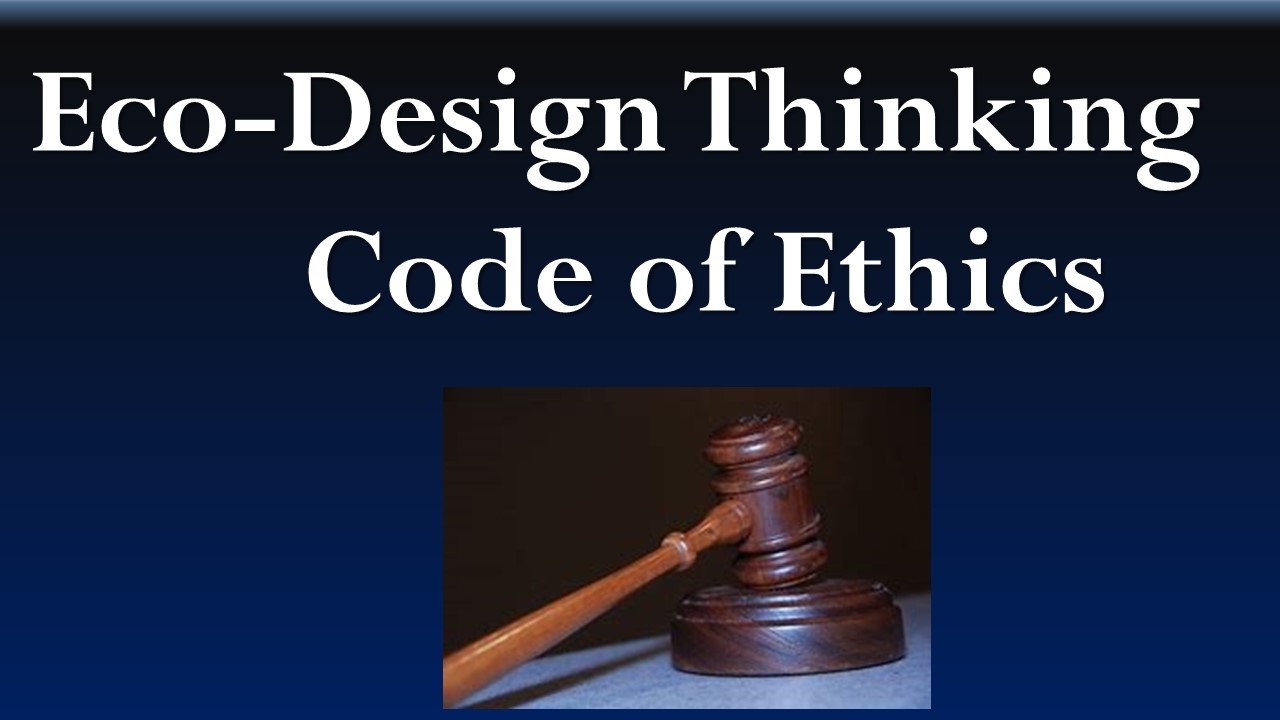 of the design thinking profession are shaped by the collective conduct of individual design thinking professionals. That is why I also provided the Design Thinking Code of Ethics.
of the design thinking profession are shaped by the collective conduct of individual design thinking professionals. That is why I also provided the Design Thinking Code of Ethics.
The New Normal Requires Empathy
Empathy means awareness of the emotions of others and the emotional connection with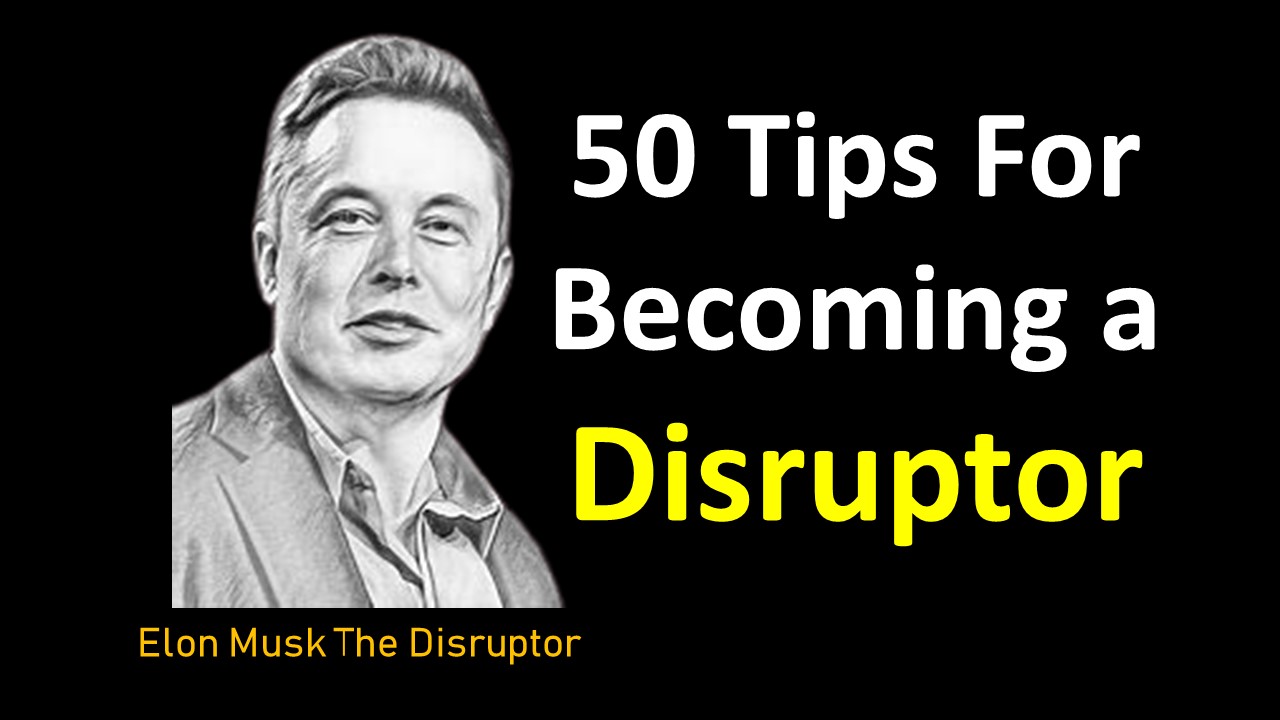 others. Empathy without personal integrity is BS! I refer to my article “50 Tips for Leading With Personal Integrity and Empathy”. Remember: “The higher your personal integrity, the better your attentiveness, the better your empathic skills, the better your design, and the happier your customer”- Hubert Rampersad.
others. Empathy without personal integrity is BS! I refer to my article “50 Tips for Leading With Personal Integrity and Empathy”. Remember: “The higher your personal integrity, the better your attentiveness, the better your empathic skills, the better your design, and the happier your customer”- Hubert Rampersad.
Inclusive Leadership
The new normal also requires inclusive leadership and leading with empathy. Leveraging diversity, inclusion, and belonging is critical in developing empathy. I refer to my article.”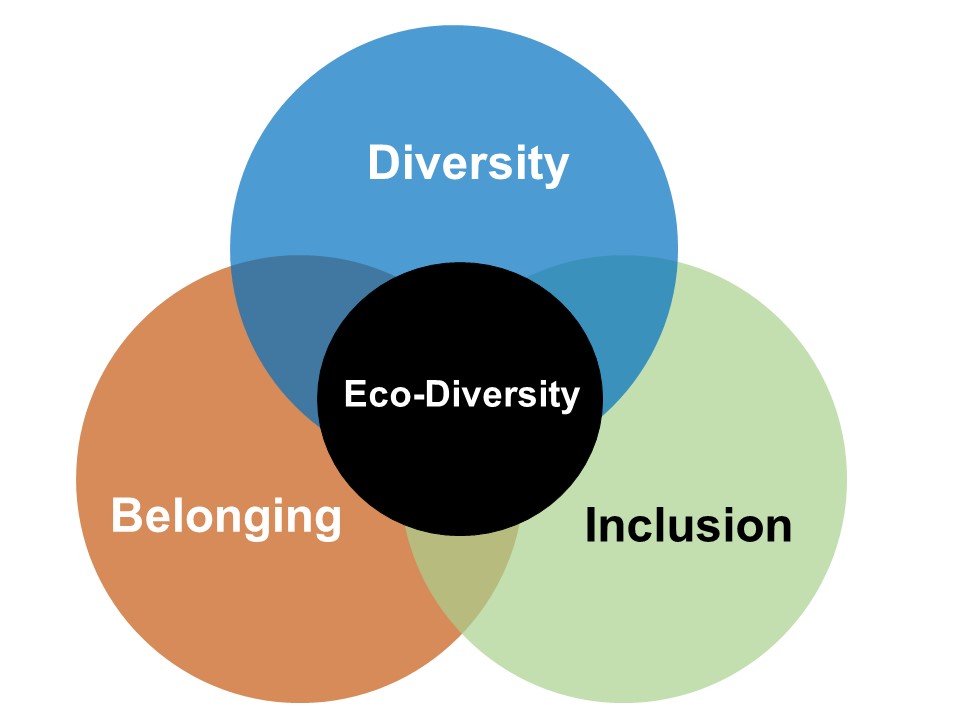 Eco-Diversity”. “There’s such a need to move the traditional Diversity and inclusion focus on cozy diversity initiatives and bureaucratical policies and instead focus on fostering a sustainable culture of eco-diversity in which eco-innovation, creativity, personal integrity, empathy, employee engagement, and a truly authentic sense of belonging & inclusion are embedded; by doing so love, happiness, and productivity at the workplace will increase. It is time for HR managers and D&I executives and professionals to understand that happy, ethical, empathic, and smart employees make happy customers”.— Hubert Rampersad.
Eco-Diversity”. “There’s such a need to move the traditional Diversity and inclusion focus on cozy diversity initiatives and bureaucratical policies and instead focus on fostering a sustainable culture of eco-diversity in which eco-innovation, creativity, personal integrity, empathy, employee engagement, and a truly authentic sense of belonging & inclusion are embedded; by doing so love, happiness, and productivity at the workplace will increase. It is time for HR managers and D&I executives and professionals to understand that happy, ethical, empathic, and smart employees make happy customers”.— Hubert Rampersad.
Bigger Picture
The introduced leadership concept is part of a bigger eco-design thinking picture: it entails aligning personal innovation with corporate innovation, alignment with yourself (to enhance personal integrity and empathy), and alignment with your design team (to enhance the designer’s engagement), as shown in this Figure:
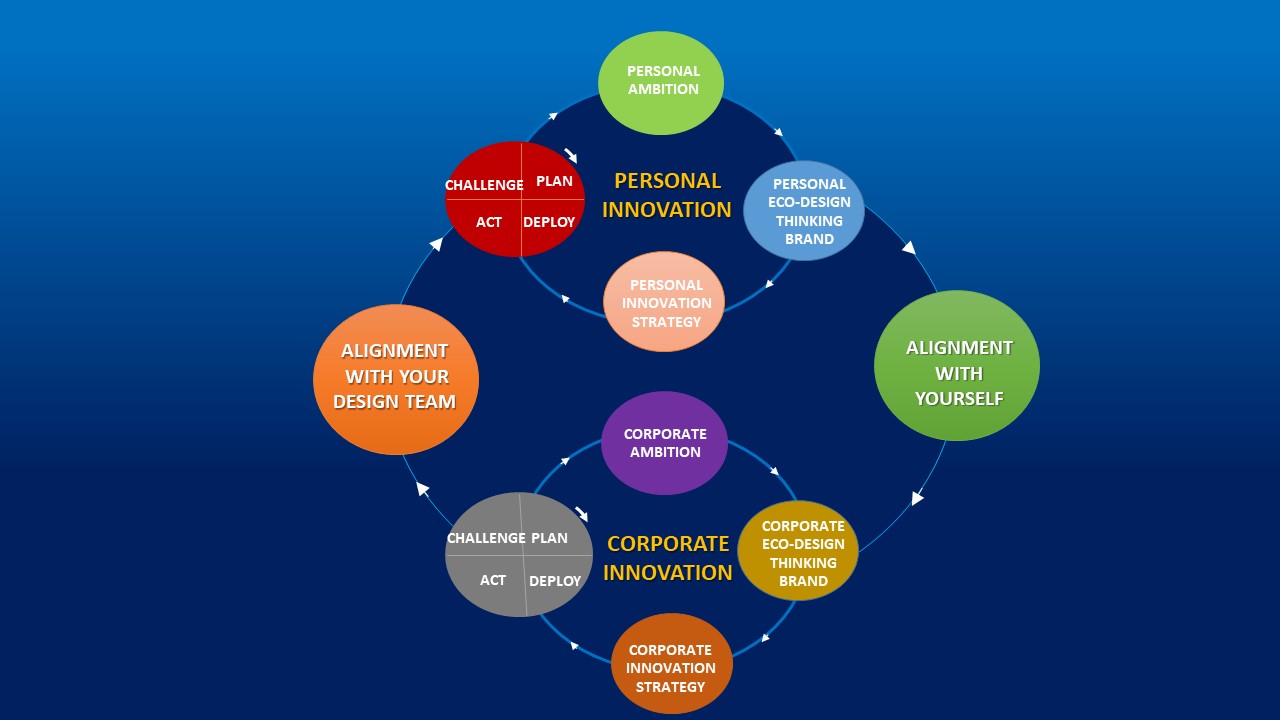
So innovation, storytelling, personal integrity, empathy, and employee engagement are all part of this bigger picture.
Read his article “How to Embed SDG, ESG, and Purpose in Innovation” and “How to Embed SDG, ESG and Purpose in Innovation.”
Advance Praise for the new book “Eco-Design Thinking for Personal, Corporate and Social Innovation.”
Hubert Rampersad, Ph.D. is a visionary who leads the way in innovative solutions for genuine sustainability, disruptive design innovation, innovation management, and entrepreneurial leadership. This highly respected Harvard Business School endorsed author holds a Ph.D. in Innovation Sciences, an MSc in Technology Engineering & Robotics, and a BSc in Mechanical Engineering from leading accredited universities in the Netherlands/Europe (Delft University of Technology, Eindhoven University of Technology). He is a well-known futurist, advocating for genuine sustainability on a global scale. With extensive knowledge and expertise, he has authored 25 books on the aforementioned topics in many languages and is highly regarded for his insights in these fields. One of his books, “Total Performance Scorecard,” has been published in 20 languages. The book’s foreword was written by Dorothy Leonard, an innovation professor at Harvard Business School. Rampersad has also previously served as a guest lecturer at MIT Sloan (number 3 in the global ranking of the best universities in the world 2024) and was featured in BusinessWeek. He was a design innovation coach at ASML (the Most Important Tech Company in the World). A guest lecture was conducted by him for students of Innovation Design Engineering (IDE) and Global Innovation Design (GID), which are two joint programs: Imperial College London (number 8 in the global ranking of the best universities in the world 2024) and the prestigious Royal College of Art) in London. Royal College of Art is the world’s most influential art and design postgraduate institution. For more information about him, continue reading About the Author.

Orlando, Florida | tpsi@live.com | Phone/whatsapp: +13053992116| skype: h.rampersad |
About his live webinars:








